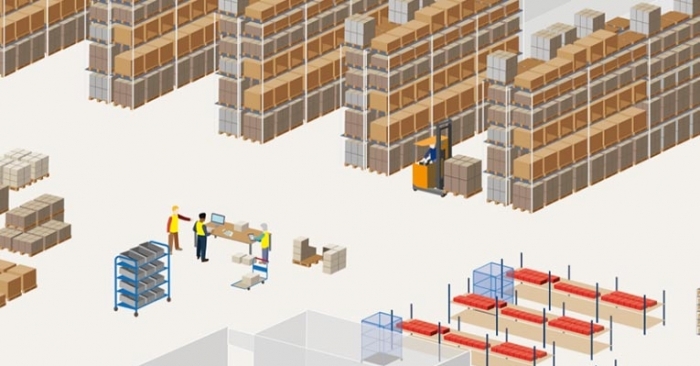Last man standing in the Covid aftermath
The initial impact of the pandemic brought the world’s supply chain to a deafening halt. All sectors felt the heat to varying degrees.

The initial impact of the pandemic brought the world’s supply chain to a deafening halt. All sectors felt the heat to varying degrees. For the logistics sector, the drop in demand resulted in a loss of about Rs. 50,000 crore as per the Indian Chamber of Commerce. Yet as the dust settled, it was clear that logistics as an industry remained the last man standing.
Sanjay Tiwari of 21CC Education writes about why it is important for the Indian logistics industry to invest in its human resources.
It was the vertebral column bringing in APIs and healthcare items to keep the wheels turning for the medical community while transporting the essentials to locked-down consumers. Going forward, logistics is set to play an even more critical role in India’s growth story.
With India gearing to become a global manufacturing hub, the need to construct an efficient and cost-effective logistics sector simultaneously has become apparent. India’s Logistics Market, 2020 research report by Research and Markets encouragingly reveals that the logistics market in India is projected to grow at a CAGR of 10.5 percent between 2019 and 2025.
Additionally, India’s e-tail market, which received a shot in the arm during the pandemic, is projected to see an annual growth rate of over 35 percent to reach $200 billion by 2025.
Against this dynamic backdrop, the Indian government’s proposed logistics policy is also a welcome move. It holds the promise to improve export competitiveness and drive efficiencies by removing bottlenecks in the logistics value chain.
The upward potential for warehouses and fulfilment centres, and thereby for jobs — is tremendous. Currently, the sector provides employment to more than 22 million people. The National Skill Development Corporation (NSDC) states that as India reeled under the Covid challenge, the logistics sector emerged as the top employment-generating sector.
In a nutshell, this is a great time to be a part of the logistics industry. However, the industry is confronting change as well as several challenges.
Wafer-thin margins
Logistics is the ultimate ‘get it right the first time around’ industry. Being a service industry, manpower capabilities remain of utmost importance.
Consumers want goods delivered faster and at lower or no cost at all. In this landscape, the industry operates on wafer-thin margins. Even a return-for-replacement shipment can spell the difference between profit and loss.
In addition to rising customer expectations, the rapid digitization makes logistics a fast-evolving space. Lifelong training of employees to do their jobs right the first time round therefore is critical.
Consider this; the hull of the Airbus A350 aircraft is so sensitive that if you damage it you damage the entire structure. A study conducted a few years ago estimated that annually $2.5 billion of damage was done to aircraft at airports around the world due to wrong handling and loading procedures. To put that in perspective, that is enough money to buy 165 Boeing 747 aircraft, and still have money left over!
The worst fallout of non-quality is accidents which can result in a loss of life or limb. These too can cost logistics operators dearly.
To avoid profit leaks & loss from multiple such scenarios, the sector must give due importance to the skilling of its manpower on equipment handling, monitoring automatic stockpiling, proper storage, cargo safety etc.
The will to skill
A KPMG survey conducted among 80 logistics companies in India revealed that in the logistics sector, the manpower costs form 8–10 percent of the overall cost in the sector. This roughly translates to about ?500 billion spent annually on logistics manpower. Of this, only 13–14 percent is spent on non-salary items such as welfare or training. Global logistics companies in comparison, spend 20 percent of their employee expenditure on non-salary items.
This must change because when the chips are down and the economy has contracted by 24 percent in the past quarter, recovery for a business is going to mean bringing forward their A-team. As Michael Leboeuf writes in The Greatest Management Principle in the World, “...if you believe that training is expensive, it is because you do not know what ignorance costs.”
India needs to bridge the skill gap and focus on building quality manpower so the sector meets its aspired growth. An interesting case study to quantify the impact of skilling the workforce through training, welfare and wages revealed the following results. With training provided to 36 percent employees of the company, the following were the observations:
- A reduction in logistics costs by 12 percent
- A reduction in logistics time of 80 min
- The retention rate improved by 58 percent
- The score of recruitment reached 4.4 out of five
The paper shows that investment done in human resources in the Indian logistics sector will help drive performance and profits, benefiting both logistics service providers as well as their customers. Skill development will also improve the image and appeal of the industry as a viable and rewarding career choice.
(Jhawar, A., Garg, S.K. & Khera, S.N. Analysis of the skilled workforce effect on the logistics performance index—case study from India. https://rdcu.be/b8Vtp)
Mike Duffy, Head Innovation at WFS, NYC, which is the world’s largest passenger and air cargo handling company also observed that adopting our training content for their 19,000 frontline employees in North America revealed a discernible reduction in claims and accidents.
But just as many logistics providers don’t understand the need to prioritize training, many students too remain unaware of the potential of logistics as a career field. With logistics rapidly taking on the role of a mainline industry rather than a supporting one, the sector needs a talent pool. More training and learning opportunities in the logistics industry will attract talent. However, India lacks an institutionalized skill development environment.
The need of the hour is building well-structured courses with industry-relevant curriculums, which can easily be disseminated. When sharp content is delivered through new-age digitized solutions— downloadable apps with interactive content and gamification features, the skills imparted will be retained and relevantly applied by people in real-world jobs.
The success of the logistics sector rests squarely on the quality of its people. This prerequisite is only set to escalate in the future.
 | Sanjay Tiwari is the co-founder of 21CC Education He has 30 years of logistics industry experience across geographies in Northern Europe, South East Asia, South America, the United States and India. Sanjay has been working for brands like Maersk Group, Air France-KLM, Van Leeuwen Pipe & Tube Group and ANZ Grindlays Bank. |
The views and opinions expressed in this article are those of the author and do not necessarily reflect the views of Indian Transport & Logistics News



